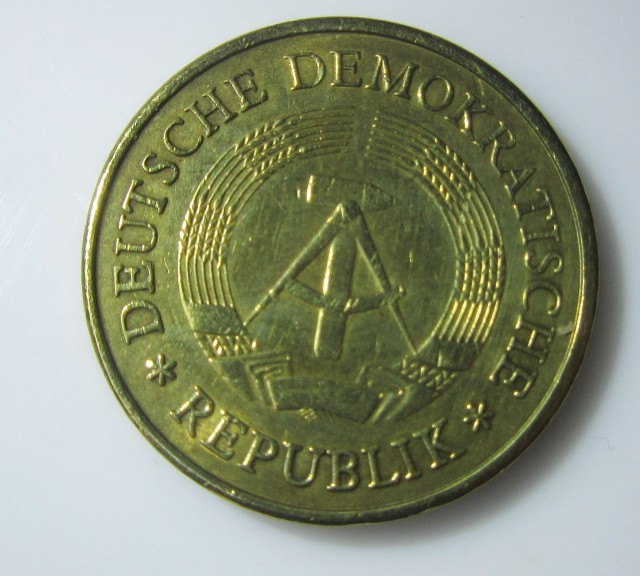
公開日24th Mar 2018
変更日時5th Nov 2023
コインはどのように作られるのでしょうか?

硬貨を製造する最初のステップは、適切な厚さの金属ストリップを製造することです。米国造幣局は、ペニー硬貨以外のすべての硬貨の金属ストリップを民間の供給業者から購入します。ペニー硬貨のストリップは亜鉛です。ニッケル硬貨のストリップは、少なくとも 75% の銅と 25% のニッケルを含む合金でできています。
米国のクォーター、ダイム、ハーフダラーも、3 層の金属を一緒に融合して作られています。外側の層はニッケルに使用される合金でできており、中心は銅です。金属ストリップは、切断された丸いブランク (プランシェット) の状態でブランキング プレスに送られ、完成したコインとほぼ同等のサイズになっています。
さらに、民間企業は、ペニーで板金を造幣局に渡します。板金は、柔らかくするために焼きなまし炉に送られ、次に、金属を消毒して磨くための化学溶液で包まれた回転シリンダーである浸漬バレルに通されます。次に、板金は洗浄され、乾燥機にセットされます。

写真: フィラデルフィア造幣局のハブと金型製造現場
次に、ブランクは「精錬」または「据え込み」機械に通され、隆起した(据え込み)縁が形成されます。ブランクは、コイニング プレスまたはスタンピング プレスで使用されます。ブランクは、非常に強い圧力で打たれると、カラーまたはリングによって固定されます。ペニー硬貨は約 40 トンの荷重を必要とし、大型硬貨にはそれに応じてさらに大きな荷重も必要です。
さらに、上部と下部の型が同時にコインの両角のデザインを踏みつけます。ブランクをつかむリング内の溝は、縁が柔らかい 5 セント硬貨と 1 セント硬貨を除いて、完成したコインの縁に「溝」または隆起を形成します。大統領の 1 ドル硬貨とネイティブ アメリカンの 1 ドル硬貨は、縁に文字が刻まれています。
コインはどんな金属から作られているのでしょうか?
以下は硬貨の鋳造に使用される金属の種類のリストです。一部はこれらの金属の組み合わせです。
ブロンズコイン
古代の貨幣のほとんどは青銅で作られています。青銅は鋳型で作られた錫と銅の混合物です。例外は、銅、錫、鉛、真鍮、青銅、鉄の混合物で鋳型で鋳造された中国の貨幣です。
古代中国の王朝の一つである漢王朝は、2億2000万枚の硬貨を生産しました。

銅貨
1922 年以前の英国では、1 ペンスは 97% が銅でしたが、1922 年以降は銅メッキ鋼になっています。 
真鍮コイン
真鍮貨幣は、銅 75%、亜鉛 20%、ニッケル 5% で作られた低価値の貨幣です。 
バイメタルコイン
これらのツートンカラーのコインは、ニッケル真鍮の芯と銅ニッケル合金の縁で作られています。製造コストは安く、見た目は魅力的です。 
銀貨
ヨーロッパの古代の銀貨は粗雑で、銀の含有率はさまざまでした。どの国も財政難に陥ると銀の含有率を減らすことがわかります。
古代ローマの兵士が銀貨に鉛が加えられたために反乱を起こしたという報告があります。
英国とオーストラリアは、第二次世界大戦後、戦争債務の返済のために貨幣の銀含有量を 92.5% から 50% に削減しました。
ヨーロッパでは、オーストリア帝国が強大だった頃、有名な 1780 年のマリア テレジア シルバー ターラー再鋳造貿易コインが鋳造されました。このコインは .83333.33 の純銀で、貿易で非常に人気があったため、オーストリア造幣局は 8 億枚のコインを製造しましたが、常に 1780 年を再鋳造として使用しました。このターラー銀貨は需要に応えるためだけにロンドンで鋳造されました。当時、北アフリカや中東の多くの国が貿易通貨としてターラー貨を使用していました。 
現在、造幣局は 99.9% の純銀を製造していますが、多くのコインには異なる割合の銀が使用されているため、これを知っておくことが重要です。 
金貨
古代から金は安定した通貨であり、古代ローマからギリシャ、ペルシャ帝国に至るまで容易に受け入れられていました。インドでさえ、16 ~ 17世紀に独自の金貨、ファナムを鋳造しました。現代の金貨は純度 99.9% で鋳造されていますが、ゴールド ソブリンは 22 カラットの金、つまり 1,000 金あたり 0.917 部しか含まれていません。現代の金貨は純度 99.9% で鋳造されていますが、ゴールド ソブリンは 22 カラットの金、つまり 1,000 金あたり 0.917 部しか含まれていません。

プラチナコイン
プラチナ コインは希少金属として鋳造され、純度 99.95% のプラチナです。パース造幣局は、高品質のプラチナ コインを製造している数少ない造幣局の 1 つです。プラチナ コインの製造には、極度に高温になる過酷な熱に耐えるさまざまな設備が必要なため、ほとんどの造幣局にはこの設備がありません。
プラチナは、XPT の ISO 4217 に基づく国際通貨記号を持っています。米国では、高品質のプルーフ アメリカン プラチナ イーグル コインも製造されています。カナダの有名なメープル リーフ デザインもプラチナ コインとして入手できます。

現代のコイン
現代の硬貨のほとんどは銅やニッケルなどの安価な金属で作られており、価値は低く、一部は銀メッキされています。多くの国では、新しいデジタル世界への移行に伴い、低価値のセント硬貨の鋳造を中止しています。ポケットに重い硬貨を入れて小銭として使い古す時代は終わり、将来の世代はこの問題に悩まされることはないでしょう。

今すぐコインを購入
Coin Encyclopedia検索
最新記事
ラージセントは1793年から1857年にかけて鋳造された1セント銅貨で、アメリカ合衆国で最初の公式硬貨の一つです。代表的な種類には、リースセントとチェーンセントがあります。ラージセントの種類、価値、そして歴史を学びましょう!
11th Jul 2025
ハードタイムズ・トークンは、1830年代の経済不況時にアメリカの民間企業によって発行された非公式のコインです。ハードタイムズ・トークンの歴史、反骨精神あふれるデザイン、そしてその価値について、ここで詳しくご覧ください。
18th Jun 2025
大統領ドルは、2007年から2020年までに発行された、すべての故大統領を描いたアメリカの硬貨です。このガイドでは、大統領ドルの背景、詳細、そして価値ある種類についてご紹介します。
5th Jun 2025
記事のカテゴリ
Collection of articles providing lots of useful information on coins through the ages.
30記事数








